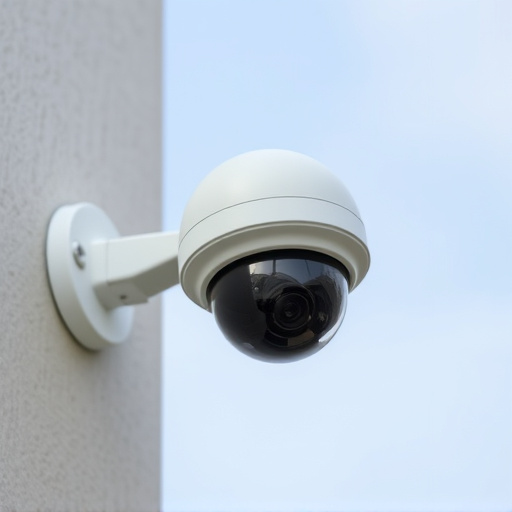Theft is a significant concern for businesses, impacting profitability and extending beyond retail to museums and homes. Wireless battery-operated dummy cameras have emerged as a game-changing solution, effectively deterring theft through subtle yet powerful mimicry of real surveillance. Strategically placed, these decoy devices reduce risk, foster security, and discourage criminal activities. Their wireless design, high-resolution footage, and discreet appearance make them ideal for diverse settings, revolutionizing security measures in the digital era.
“In today’s digital age, retail and business owners face a persistent challenge: theft. Understanding the problem is the first step towards finding innovative solutions. This article explores how Wireless Battery Operated Dummy Cameras (WBODC) provide a discreet yet powerful deterrent. We’ll delve into their technology, from the subtle design to advanced activation mechanisms, showcasing why they’re revolutionizing prevention strategies. Additionally, we’ll offer practical tips for implementation, ensuring these decoy cameras maximize their protective capabilities.”
- Understanding the Problem: Common Theft Challenges in Retail and Beyond
- The Power of Wireless Battery Operated Dummy Cameras: A Discreet Solution
- How Do These Decoy Cameras Work? Unveiling the Technology Behind the Trick
- Implementing and Maximizing Prevention: Tips for Effective Use of Wireless Battery Operated Dummy Cameras
Understanding the Problem: Common Theft Challenges in Retail and Beyond
Theft is a significant concern for businesses, particularly in retail environments where merchandise is highly visible and valuable. From small local shops to large chain stores, retailers face constant challenges to protect their products from theft, which can lead to substantial financial losses and impact overall profitability. This problem extends beyond retail; high-value items in museums, art galleries, and even residential homes are susceptible to theft, requiring innovative security measures.
Wireless battery-operated dummy cameras have emerged as a game-changing solution. These decoy devices mimic real surveillance cameras, deterring potential thieves by creating the perception of constant observation. By strategically placing these cameras throughout an area, businesses can significantly reduce the risk of theft and create a sense of security that may discourage criminal activities. This technology offers a subtle yet effective way to navigate the challenges posed by common theft scenarios in various settings.
The Power of Wireless Battery Operated Dummy Cameras: A Discreet Solution
Wireless Battery Operated Dummy Cameras have emerged as a discreet and powerful solution in the fight against theft. Their wireless nature allows for easy installation, eliminating the need for complex wiring, making them ideal for various environments. These cameras can be strategically placed in hard-to-reach areas or hidden within everyday objects, providing a sense of security without drawing attention.
The battery-powered feature offers unparalleled convenience and flexibility. Unlike wired systems that require consistent power sources, these decoy cameras can operate autonomously, ensuring continuous monitoring. This technology is particularly effective in retail stores, warehouses, and even residential homes, as it discourages potential thieves, acting as a powerful psychological deterrent.
How Do These Decoy Cameras Work? Unveiling the Technology Behind the Trick
Wireless battery-operated dummy cameras, often referred to as decoy or mock surveillance cameras, are an innovative deterrent for theft and vandalism. Their effectiveness lies in their unassuming appearance and strategic placement. These cameras mimic real security equipment, tricking potential thieves into believing they are under constant observation. The technology behind these devices is simple yet clever; they rely on a combination of advanced design and wireless connectivity.
When installed discreetly in areas prone to theft or vandalism, these dummy cameras simulate the look and functionality of genuine security cameras. They use low-power wireless transmission to send video feeds to a central monitoring system or a smartphone app. This wireless battery operation ensures they can be placed virtually anywhere without the need for complex wiring. The cameras capture high-resolution footage, providing clear images that can serve as compelling evidence in case of an incident, thus acting as a powerful psychological barrier against criminal activity.
Implementing and Maximizing Prevention: Tips for Effective Use of Wireless Battery Operated Dummy Cameras
Implementing wireless battery operated dummy cameras is a smart step towards preventing theft, but to maximize their effectiveness, there are several tips to keep in mind. Firstly, place these decoy cameras strategically in high-risk areas where potential thieves might try to access valuable items or sensitive spaces. This could include entry points, shelves with expensive goods, or even inside cars. A well-positioned dummy camera can act as a powerful deterrent, making would-be thieves think twice before attempting any illegal activity.
Additionally, ensure the cameras are discreetly integrated into the environment to maintain their authenticity. You can place them behind displays, on high shelves, or even within false walls to create an illusion that real surveillance is always active. Regularly changing the camera locations and battery operations can further enhance this effect, making it harder for criminals to anticipate and bypass security measures.
Wireless Battery Operated Dummy Cameras offer a revolutionary and discreet approach to preventing theft, proving to be an effective solution for retailers and businesses worldwide. By mimicking real surveillance equipment, these decoy cameras deter potential thieves without the need for extensive wiring or complex setups. With their wireless design and long-lasting batteries, they provide freedom of placement, allowing businesses to strategically position them to maximize coverage. Implementing this technology, combined with robust security measures, can significantly reduce theft and create an environment where criminals are less likely to strike.
